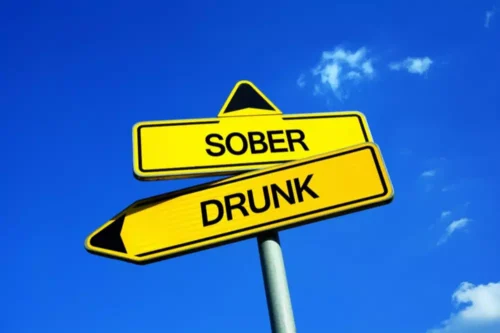
Contrary to the belief that halfway houses are supportive service providers, the majority of halfway houses are an extension of the carceral experience, complete with surveillance, onerous restrictions, and intense scrutiny. “Halfway house” can refer to different types of facilities that share some similarities. These facilities range from entirely carceral to not carceral at all (represented by the locked doors), and feature different priorities and programming for the people residing in them. Their purposes can also overlap, as community based correctional facilities, for instance, house individuals at various stages in their incarceration. For the purpose of this briefing, however, we are focusing on “Halfway Houses in the Criminal Justice System”– which are state or federally contracted facilities for people leaving state or federal incarceration. Also note that in some states (e.g., Texas), halfway houses only serve parolees.13 So it may be helpful to note how your state defines the term before you consider a halfway house as a recovery option.

How To Overcome Triggers In Recovery
- Last year, we expanded our services to include robust mental health treatment, a new outpatient location, and specialized programming for our nation’s veterans, with more to come this year!
- Lastly, halfway houses are often owned or sponsored by the state, while most sober-living houses are owned privately or by treatment facilities that want to provide continuing support for their patients.
- However, it’s worth checking with your insurance provider to see if they might cover this cost.
- Our representatives can answer your questions and guide you toward treatment in your area.
More funding is still needed to meet the demand and ensure that individuals in recovery have access to the supportive environment they require. Outpatient programs in low income urban areas might find the Options Recovery Services model of SLHs helpful. Relative to the other housing programs, this model was inexpensive and the houses were conveniently located near the outpatient facility. Typically, residents entered these SLHs after establishing some period of sobriety while they resided in a nearby shelter and attended the outpatient program. A significant strength of the Options houses was that residents were able to maintain low alcohol and drug severity at 12-month follow up.
Government Assistance for Sober Living Homes

Contact one of our admissions navigators today to take the first steps toward recovery or to help identify recovery residences that can aid your recovery . We publish material that is researched, cited, edited and reviewed by licensed medical professionals. The information we provide is not intended to be a substitute for professional medical advice, diagnosis or treatment. It should not be used in place of the advice of your physician or other qualified healthcare provider.

The Difference Between Sobriety & Recovery
One study of 330 residents at 49 sober living homes in California found that residents had increased odds of total abstinence and employment. The same research also identified operational characteristics that improved the success rate of sober houses. This included the facility’s location and whether residents must be sober for at least 30 days before admittance. One of the most challenging times for someone recovering from drug or alcohol addiction is when they leave a residential treatment center and head back to their daily life. Without the supervision and structure of a treatment program, a person in recovery can be tempted to return to old habits.
Freestanding SLHs
Avenues Recovery is a community-based drug and alcohol rehabilitation center with locations across the United States. You can also speak with your doctor or healthcare professional for referrals to nearby addiction treatment providers and support services for addiction treatment. Some halfway house residents might be there because the court has required it as part of a sentence. Halfway houses designated for convicted criminals are sometimes called Community Corrections what is a halfway house Centers or Community Correctional Centers.
- For instance, a community-based corrections facility might primarily house people who have been ordered to serve their full sentences at the facility, but also house some individuals who are preparing for release.
- Substance abuse can affect all aspects of a person’s life, including how they function in their family, work, and community.
- The study design used repeated measures analyses to test how study measures varied over time.
- Halfway houses for people without homes are designed for the general population, but the programs may be capable of helping people in recovery from substance abuse issues.

However, these environments are made to be affordable for people with addictions. In most cases, sober living homes cost the same amount or less than the average rent in the surrounding area. Some insurance plans may cover the cost of rent at a halfway house, but this solely depends on your provider and insurance plan. Additionally, some sober living homes offer financial aid and sliding payment scales. Talk to the team at your local transition living environment if you think you or a loved one is eligible to receive financial aid for rent costs.

For example, you will generally rent on a month-to-month basis for an indefinite amount of time and be required to give a 30-day notice if you plan to vacate the premises. In an inpatient rehab program, you will discover that many people are traveling down the same road as you, and you can support each other. People who are addicted to drugs will know that no one, no matter how understanding and empathetic, can understand them as well as other recovering addicts and mental health professionals can. The purpose of a halfway house is to help people who need some support to reintegrate into society after completing rehab. The good news is that because halfway houses are government-funded, many insurance companies (especially Medicaid under the Affordable Care Act) will cover the cost of your stay. While halfway houses assist recovering addicts, former correctional facility inmates may come to live at a halfway house after finishing a prison sentence to help them with their reentry into regular society.
- Halfway houses are like “halfway points” between some kind of rehabilitation program and regular, day-to-day living.
- When seeking financial assistance, non-profits should consider aligning with foundations or companies with similar values.
- They offer various benefits, such as increased accountability, access to recovery resources, and opportunities for personal growth.
- Prison systems in many states use halfway houses to help individuals re-enter society after incarceration.
Avenues Recovery describes what a halfway house is like for the residents and what rules to expect. Jessica graduated from the University of South Florida (USF) with an English degree and combines her writing expertise and passion for helping others to deliver reliable information to those impacted by addiction. Informed by her personal journey to recovery and support of loved ones in sobriety, Jessica’s empathetic and authentic approach resonates deeply with the Addiction Help community. Communities’ typical concerns about halfway houses usually stem from a fear of disruptive behavior, lowered property values, excess noise, or additional traffic. However, research shows that halfway houses do not disrupt their communities and have little impact. Some recovering addicts may struggle with too much freedom and need more of a residential rehab center’s structure.
